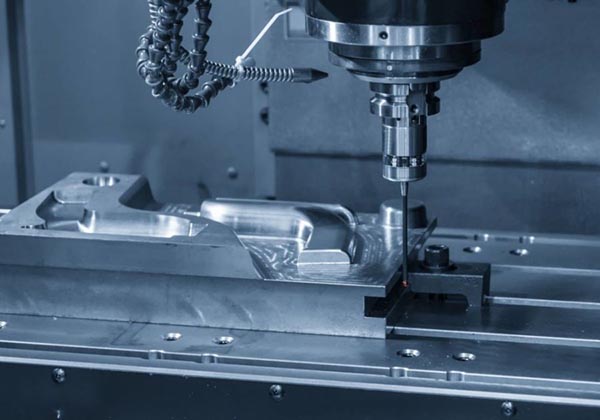We all know about 3D Printing or additive manufacturing. But how much do you know about 3D printing’s closest competition, CNC milling? Like 3D printing, CNC milling is also a preferred manufacturing method in making custom-designed parts or products. In this article, we will take a closer look at this technology, including the types of machines and tools that it uses.
What is CNC?
Computer numerical control is a code that is programmed to contain the instructions for the precise movements of the machines. Simply put, the code dictates how a product should be created, produced, or transformed from the material to a real functional object.
With this definition, when a CNC machine interacts with a computer that has the software will transform the numerical code into coordinates. In this interaction, the machine functions like a robot that has high precision. In this technology, the machine transforms the material into a finished product by the subtractive technique.
What is CNC Milling?
Using CNC, this machining process used computerized controls and rotating multiple points cutting tools to remove the material from a workpiece and create a custom-designed product. It applies to a variety of materials that include wood, glad, plastic, and metal.
There are several applications under the umbrella of CNC machining services like thermal, electrical, chemical, and mechanical. CNC milling falls under the category of mechanical machining, which includes turning, drilling, and many other machining processes. When we say mechanical machining, it means that the material is slowly removed from the original piece using mechanical means.

CNC milling services*
What is a Milling Machine?
Since milling is the process of drilling and cutting material like metal or wood, the milling machine is using a rotating cylinder-shaped tool called the milling cutter. The milling machine is different from other drilling machines for many reasons. But its main difference is its ability to cut in many angles, and it can move along several axes. Because they behave as such, it results in many types of milling machines according to the number of its movement axes.
2-axis milling machines
This machine can cut slots and holes in both the x and z axes. Translating it to simple terms, it means that the machine can cut horizontally and vertically in a single direction.
3-axis milling machines
This type of machine adds a y-axis to its function. We commonly find these machines as they can cut vertically and in any direction. However, cutting a sphere can be done only one half at a time. The reason behind this limitation is because even if you have three axes, you will not be able to cut from below.
4-axis milling machine
The 4-axis milling machine adds complexity to the three types of machines previously discussed because it can rotate on the x-axis, behaving like a lathe.
5-axis milling machine
In this type of milling machine, it has both the x and y axes that rotates. This makes it a complete milling machine that has multiple abilities. With a 5-axis milling machine, you can shape bones, car models, aerospace structures, medical products, and every imaginable item.
CNC Milling machines
The only difference of CNC milling machines from other milling machines is it is operated using CNC. It can have different axes from two to five.
What are the Different Types of Milling Machines?
We know now that computers control CNC Milling machines. Aside from the classification of milling machines according to the number of axes, it is also other types of milling machines that are either operated manually or with CNC. Here are the types of milling machines.
Vertical Mill
A vertical mill is a 3-axis milling machine composed of a table acting as the surface, an arm in the bottom where the spindle is attached. Then both of these components are connected to a vertical column. The spindle is also vertically oriented.
The mechanism is simple. The table moves up and down in the z-axis to meet the fixed arm. There is further differentiation among vertical mills as they are also classified based on how the table and the spindle are moving. There is the turret vertical mill where the spindle is not moving while the table moves along the two axes. The other type is the bed vertical mill, where the table moves along the x-axis, and the spindle is traveling along the y-axis.
Horizontal Mill
It is similar to the vertical mill, but its spindle has a horizontal orientation and not vertical. It is less versatile than a vertical mill, and they are more suitable for more substantial or longer workpieces. There is a universal horizontal mill where the table is moving along the z-axis, which makes it a 4-axis milling machine.
Knee Mill
It applies to any mill where the table is moving up and down in the column as dictated by the adjustable knee.
What are the Types of Milling Tools?
You can find different tools in every machine to make different cuts. These tools are made for different materials, and it’s the job of the engineers to select the perfect tool for the job. Otherwise, they will not get the designed product. The most basic tool is the milling cutter. It looks like a drill bit; it has teeth intended to chip away the material other than drilling. It can have different spacing and teeth orientation.
We have outlined above the basics of the CNC milling process. Although it can have broad applications and can produce different products, CNC milling does not apply to every manufacturing process. There are some considerations that manufacturers must account for before deciding if this process is the optimal solution for their manufacturing needs.
Reference
*Image from https://jm-process.com
